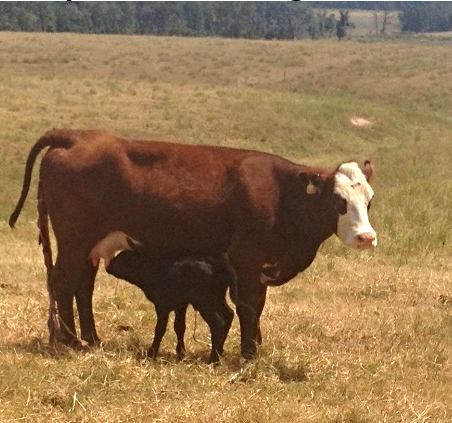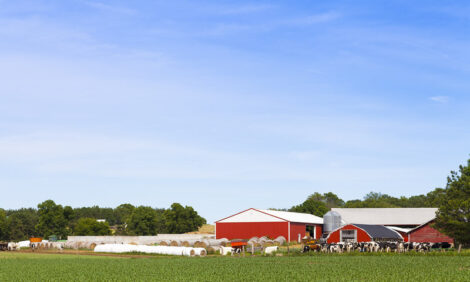



Time to Plan For Spring Calving Herds
Whether in the throws of calving now or next spring, there are plenty of jobs in preparing newcomers, weanlings, vaccinations and selecting breeding stock, Arkansas producers are being told.Spring calving herds can use production data to inform culling/selection decisions, write University of Arkansas beef extension experts in their September newsletter.
Testing herd performance means weighing cows and calves, frame and muscle scoring calves and body condition cows.
Tips for Spring Calving Herds
- Cow herd performance is an opportunity to use production data to aid in replacement heifer selection or cull cows due to poor performance. A herd performance test involves weighing cows and calves, frame and muscle scoring calves and body condition cows.
- Walk through your cattle working facilities and take note of repairs and maintenance before fall weaning. Test all weak spots. These are supposed to be "working" facilities not "work-out" facilities. Facilities should be maintained for your safety and well as safety for your cattle.

Arkansas cattle farms should be vigilant for prussic acid poisoning if calving now
- Start making plans for weaning calves. Retained ownership can often increase gross income, but to be profitable, cost of feed cannot be too excessive. Hay and supplement based programs are more costly than pasture and supplement programs, so good fall pasture management is important.
- Consider fence line weaning suckling calves. This reduces stress on the cows and calves. In addition calves continue to gain weight and respiratory disease is greatly reduced compared to conventional weaning. Training cattle to respect electric fencing prior to weaning can facilitate the weaning process. Fenceline weaning also allows high-quality pastures to be used as weaning facilities in place of dusty drylots.
- Implement a precondition program. Precondition programs include weaning calves at least 45 days to sale or according to the requirements of the specific preconditioning program, castrating bull calves, dehorning if necessary and a vaccination program. Preconditioned calves will sell for higher selling price. Remember to follow BQA guidelines when giving vaccinations.
- Pregnancy tests all cows. Cull all open cows and cull all cows with physical problems such as bad eyes, poor udders, lameness, missing teeth, etc.
- Select replacements heifers based on pre-weaning performance and phenotypic expression. Also select heifers that were born early in the calving season.
- Vaccinate heifers for brucellosis.
- Forage test and plan for winter feeding program.
Tips for Fall Calving Herds
- Cows should be calving. Check cows often throughout the calving season. Check first calf heifers more often.
- Vaccinate replacement heifers 30 to 60 days before the breeding season.
- Evaluate and select sires for breeding season.
- Take care of newborn calves; dip navel, ear tag, castrate bull calves, etc.
- Forage test and plan for winter feeding program.
- Be on the alert for prussic acid poisoning.
Planting of winter annual grass forages
- Plant small grains such as rye, wheat, or oats. Provide forage for grazing between November and March.
Establishment of winter annual legume forages
- Legumes such as crimson clover, arrowleaf clover, and hairy vetch potentially provide multiple benefits, including grazing and improving soil fertility.
- Planting in middle to late September, in southern Arkansas until middle of October.
- Legumes can be no-till drilled into warm-season grass stubble (bermudagrass).
- No-till drills need to be kept clean and in good working order to plant at consistent depth and seeding rates.
Plant forage brassicas: turnip, turnip hybrids, or rape:
- Plant between August 25 - mid September.
- Seeding rate: 2-3 lbs/ac if planting with ryegrass or small grains; 5 lbs/ac for pure stands.
- Grazing turn-in 14-16"; if regrowth is desired rotate livestock out at 6-8".
Fescue
- Stockpile fescue for winter grazing.
- Clip or graze fescue pastures to 4" stubble by September 1 and fertilize with 50-60 lbs/acre of nitrogen.Defer grazing until December 1.
- Strip-grazing will yield twice as many grazing days as will giving access to the whole pasture.
Bermudagrass Winter Pasture
- Prepare bermudagrass pastures for interseeding ryegrass or small grains to use as winter pasture.
- Graze bermuda to a 2-3" height in September.
- Plant winter annuals with no-till drill or broadcast/drag in early October.
- Plant small grain at 100 lbs/acre. Plant ryegrass at 20 lbs/acre.


